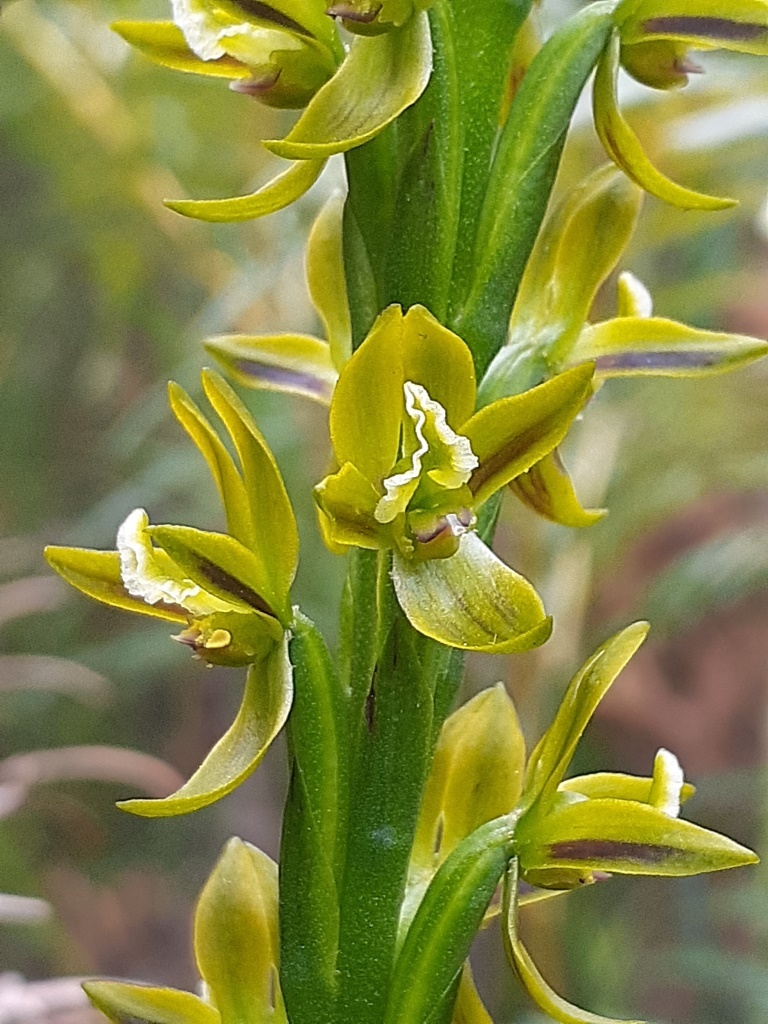Prasophyllum flavum
R.Br. Yellow Leek-orchidFlowering stem robust, to 90 cm high, arising from thick, brittle roots and swollen tubers. Leaf-blade green or blackish, much shorter than the inflorescence, the blade only 1–3 cm long. Flowers green or yellowish and red-brown, numerous in a crowded spike; ovary narrow-cylindric, to 10 mm long, appressed to the rachis; sepals 6–8 mm long, yellow-green, dorsal sepal broad-lanceolate, lateral sepals erect, united, lanceolate, somewhat hooded; petals similar to sepals but shorter, incurved. Labellum sessile, base pouched, erect, lamina only slightly recurved, white, crisped and crenulate, with incurved margins; callus plate green, broadly channelled, very short, verrucose near apex. Column appendages squarish, c. 2.8 mm long. Flowers Nov.–Jan.
GleP, VVP, GipP, OtP, GGr, EGL, EGU, WPro, HSF, HNF, OtR, Strz, MonT, HFE, VAlp. Also Qld, NSW, Tas. Uncommon in fertile, moisture-retentive soils in tall mountain forests, open-forest and woodland.
A distinctive species, easily recognized by the very short leaf-blade, strongly fragrant yellow-tinged flowers which lean forward and have incurved labellum margins. Prasophyllum flavum depends greatly on fungal symbionts for nourishment (mycotrophic).
Bates, R.J. (1994). Prasophyllum. In: Walsh, N.G.; Entwisle, T.J., Flora of Victoria Vol. 2, Ferns and Allied Plants, Conifers and Monocotyledons, pp. 869–886. Inkata Press, Melbourne.
 Spinning
Spinning

